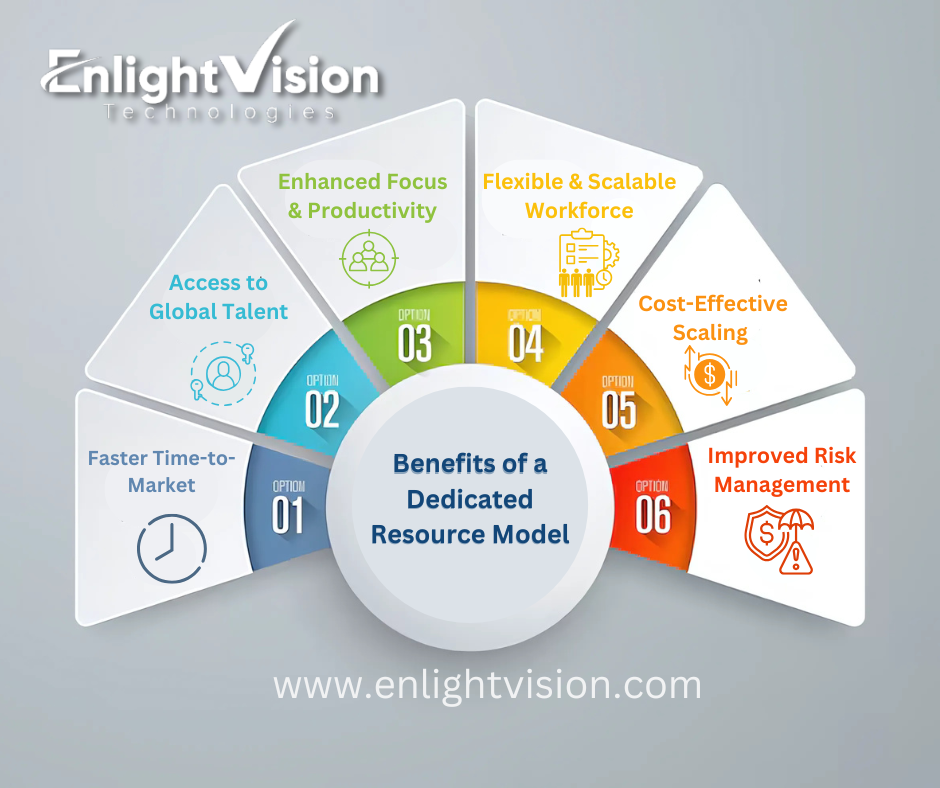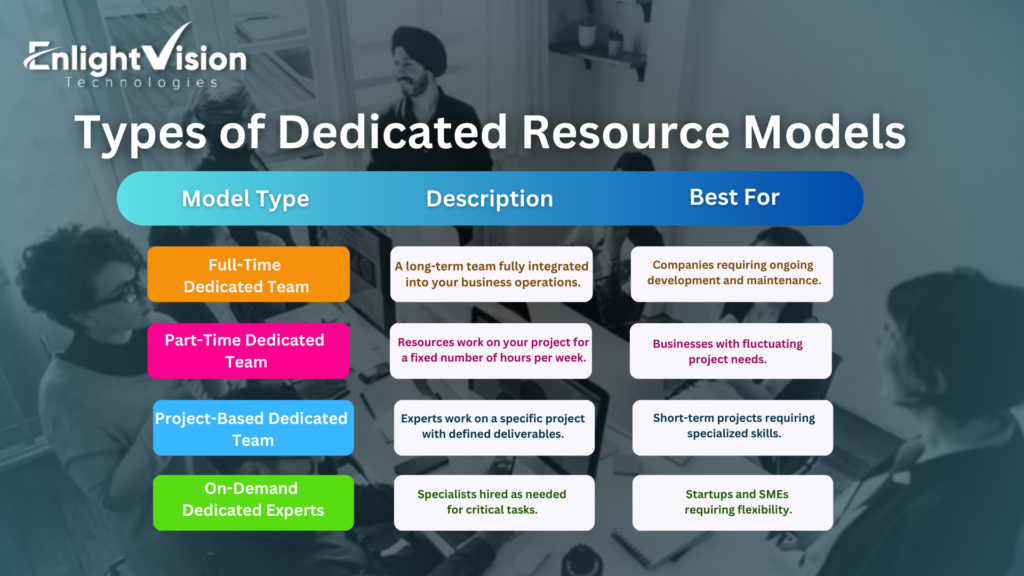Dedicated Resource Model : A Detailed Guide to Scale Business Efficiently
Scaling a business efficiently is a challenge for many companies, especially in today’s fast-paced digital landscape. Traditional hiring methods often lead to high costs, long recruitment cycles, and resource misalignment. This is where Dedicated Resource Models (DRMs) come in, offering a cost-effective and scalable solution.
A Dedicated Resource Model allows businesses to access highly skilled professionals on demand, ensuring flexibility, efficiency, and cost savings. In this guide, we’ll explore the benefits, implementation strategies, key industries leveraging DRMs, and future trends. Whether you’re a startup, SMB, or enterprise, this model can revolutionize your approach to workforce management.
Understanding the Dedicated Resource Model
What is a Dedicated Resource Models?
A Dedicated Resource Model (DRM) is an outsourcing strategy where businesses hire external teams or professionals to work exclusively on their projects. Unlike traditional outsourcing, where teams handle multiple clients, dedicated resources focus solely on your business objectives, ensuring deeper integration and alignment with company goals.
Benefits of a Dedicated Resource Model

1. Faster Time-to-Market
A dedicated team allows businesses to reduce development cycles and launch products faster. With experienced professionals ready to start immediately, companies avoid lengthy recruitment processes.
2. Access to Global Talent
By leveraging dedicated resources, businesses tap into global talent pools, gaining access to specialized skills that may not be available locally. This is particularly beneficial for industries requiring niche expertise, such as AI development or blockchain solutions.
3. Enhanced Focus & Productivity
Dedicated teams focus exclusively on your business goals, ensuring higher productivity and efficiency. Unlike freelancers who juggle multiple clients, dedicated teams commit to long-term success.
4. Flexible & Scalable Workforce
DRMs offer complete flexibility—scale up or down based on project demands. Whether you need additional resources for peak seasons or reduce staffing during slow periods, the model adapts seamlessly.
5. Cost-Effective Scaling
Traditional hiring involves recruitment costs, onboarding expenses, and employee benefits. With DRMs, businesses eliminate these overheads while maintaining high-quality output. Studies show that companies using DRMs save 30-60% compared to in-house hiring.
6. Improved Risk Management
A well-structured DRM mitigates risks associated with in-house hiring, such as employee turnover, legal compliance, and skill gaps. With service-level agreements (SLAs) and well-defined contracts, businesses enjoy a structured, predictable workflow.
Types of Dedicated Resource Models:

Industries Benefiting from Dedicated Resource Models
1. IT & Software Development
The IT sector benefits immensely from DRMs, especially for software development, cybersecurity, and DevOps. Many tech giants, including Google and Microsoft, use offshore dedicated teams to accelerate innovation.
2. Healthcare & Telemedicine
Dedicated healthcare IT teams support EMR/EHR development, AI-driven diagnostics, and telehealth applications, allowing medical providers to scale without operational bottlenecks.
3. E-commerce & Retail
From website development to inventory management, dedicated teams ensure smooth operations and enhanced customer experiences in the e-commerce space.
4. Finance & Fintech
Dedicated fintech developers help build secure payment gateways, fraud detection algorithms, and AI-powered financial tools, improving security and compliance.
5. Digital Marketing & Content Creation
Marketing agencies leverage DRMs for SEO optimization, PPC campaigns, and social media management, ensuring high-quality content production at scale.
How to Implement a Dedicated Resource Model
1. Identify Your Business Needs
- Define the skill sets required (e.g., AI specialists, full-stack developers, UX designers).
- Determine project duration and budget constraints.
- Set clear KPIs and performance benchmarks.
2. Choose the Right Partner
- Evaluate service providers based on experience, past projects, and client reviews.
- Conduct interviews and technical assessments.
- Ensure transparency in pricing and engagement models.
3. Onboard and Integrate the Team
- Provide project documentation and guidelines.
- Utilize tools like Slack, Trello, and Jira for seamless communication.
- Assign an in-house project manager to streamline workflows.
4. Monitor and Optimize Performance
- Track progress using KPIs (e.g., task completion rate, issue resolution time).
- Hold regular meetings for feedback and performance reviews.
- Adapt strategies based on business needs and team efficiency.
Case Study: Scaling a Fintech Startup with Dedicated Teams
A fintech startup faced challenges in scaling due to a lack of in-house expertise. By adopting a Dedicated Resource Model, they hired a remote development team specializing in blockchain and AI.
Results:
- 40% faster product launch compared to in-house hiring.
- Reduced costs by 35%, allowing funds to be allocated to marketing.
- Improved security compliance, meeting industry standards effortlessly.
Future Trends in Dedicated Resource Models
1. AI-Driven Talent Matching
AI-based platforms will enhance hiring efficiency by matching businesses with ideal candidates based on skills, experience, and project requirements.
2. Hybrid Workforce Models
Companies will increasingly blend in-house teams with dedicated remote teams, ensuring flexibility and cost efficiency.
3. Blockchain for Secure Outsourcing
Blockchain technology will be integrated into contract management and freelancer verification, reducing risks associated with offshore outsourcing.
Conclusion: Scale Your Business with Confidence
Dedicated Resource Models are a game-changer for businesses looking to scale efficiently, reduce costs, and access top-tier talent. Whether you’re a startup seeking rapid growth or an enterprise optimizing operations, DRMs provide a strategic edge.
🚀 Ready to scale? Contact us today and discover how dedicated teams can transform your business.
📩 Email: info@enlightvision.com
Related Articles:
- How to Overcome Talent Shortages with Dedicated Development Teams
- Dedicated Resources vs In-House Hiring Costs: Which is More Cost-Effective?
Useful Links:








